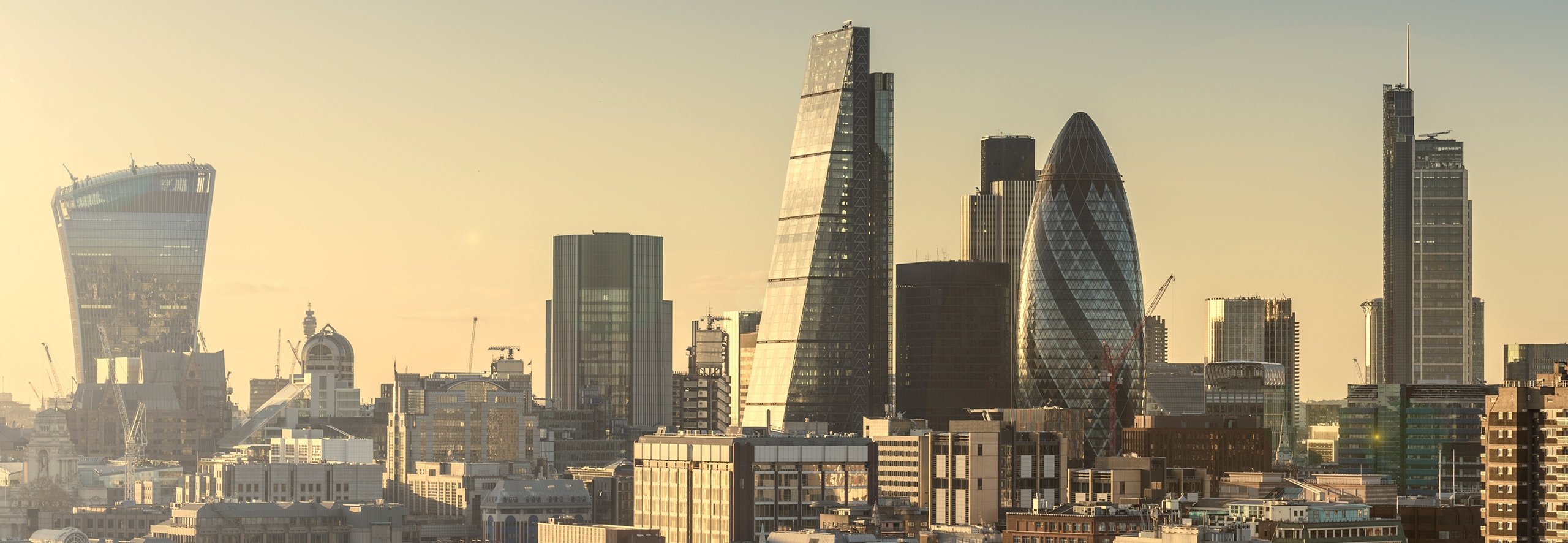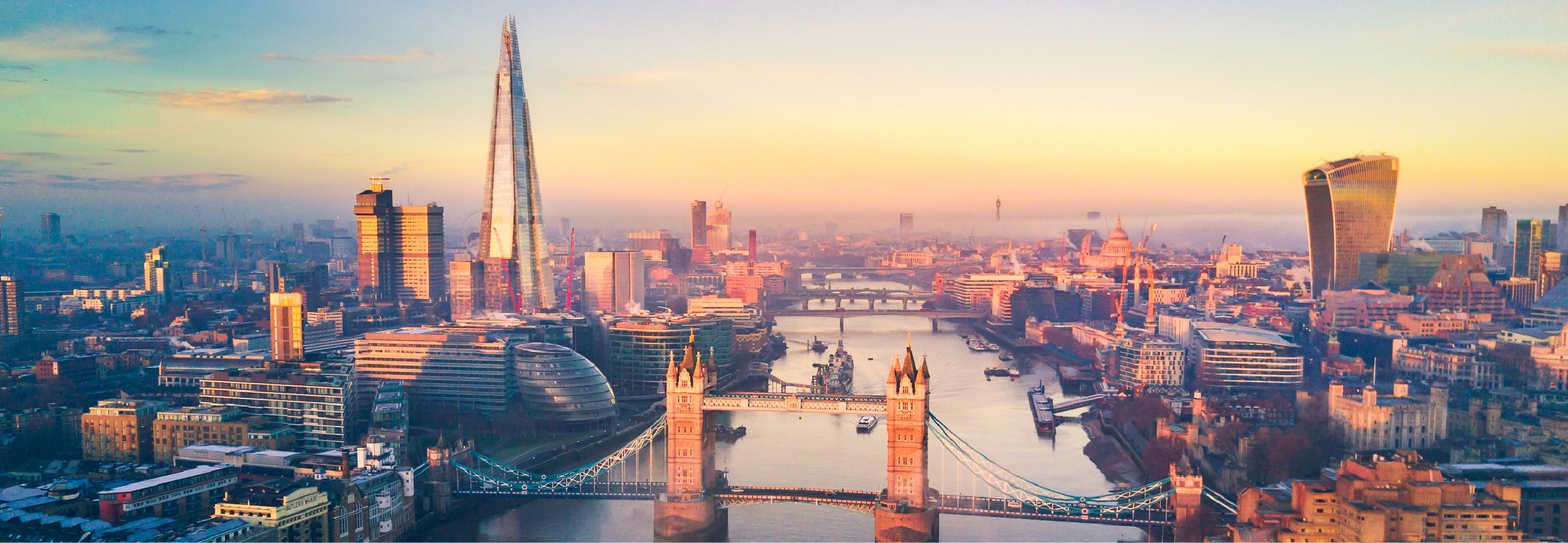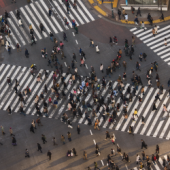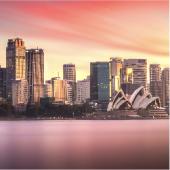Skyscrapers circa 2030: What’s their place in the future city?
IN BRIEF
- By 2025, London will be home to 10 new, tall buildings. New York has multiple skyscrapers under construction, including The Spiral, which will house Pfizer’s headquarters when completed in 2024.
- The 2030 skyscraper office will survive if it is a quality place of work that prioritizes wellbeing, employee amenities and hybrid working to attract talent.
- Skyscrapers are on their way to becoming carbon neutral. New York’s Climate Mobilization Act aims for the city’s largest buildings to cut emissions 40% by 2030.
Verticality has always been a part of ancient, old and modern cities. The urban fabric of cities like London, New York and Shanghai has evolved with a different vertical form dominating the cityscape over time. The modern-day skyscraper shadows over cathedral spires and civic monuments that once took the crown in the cityscape. The skyscraper is a unique aspect of cities. And it is more than just a means to extract maximum profit, high density and efficiency from a small parcel of land in the city. The skyscraper has an inevitable cultural significance as a shaper of a city’s image, a landmark for urban dwellers and a marker of a specific era.
Over the last two decades, there has been a global boom in skyscraper construction. Eighty-seven of the world’s 100 tallest buildings today were all completed and opened since 2000, according to The Council on Tall Buildings and Urban Habitat. Of the top 10 tallest buildings, seven are located in Asia, two in the Middle East and one in New York City. Dubai’s Burj Khalifa, completed in 2010, is the world’s tallest building.
And even beyond this ranking of the world’s 100 supertalls, skyscraper construction has also been booming since the early 2000s in typically low-rise European cities including London, Barcelona, Paris and Milan. London has seen a crop of new skyscrapers being constructed over the last two decades which has included new, tall buildings known as much for their design as their unique names such as The Shard, The Gherkin and The Cheesegrater (Leadenhall Building). London’s context is specifically what my research is responding to and where this piece is launching from in thinking about the future of cities in 2030 and how skyscrapers are an important part of the conversation.
Before thinking about the end of this decade, it is worth thinking about where we are right now. Over the last 18 months, every realm of our lives as we once knew it has been dramatically transformed due to COVID-19. The year 2020 was like no other. We remained at home in line with government-led or self-imposed lockdowns. We abandoned our daily commutes, offices and coffee runs for working from home, video conference calls, and adjusting to a new “normal.” Skyscrapers, now mostly empty spaces sitting in and towering above the deserted city, were the least of our concerns.
But the pause enforced on our lives also provided moments for those in academia and the real estate industry to think about the future of the skyscraper. In many virtual conferences and talks, the future of the city has been discussed. I’ve had multiple conversations with key figures in and of the world of London property and skyscrapers. It is from these conversations and events that I am drawing on to present a series of possibilities for the future cultural significance of the skyscraper: a look at the end of this decade based on the tumultuous beginning, 2020. Skyscrapers, old and new, have a long life span. Their resilience and adaptability to change is not so much a question as it is a necessity. So, what will the cultural significance of the skyscraper be in 2030?
London has seen a crop of new skyscrapers being constructed over the last two decades which has included new, tall buildings known as much for their design as their unique names such as The Shard, The Gherkin and The Cheesegrater (Leadenhall Building).
Healthy
Health will be embedded in people’s behavior as much as it will be in the skyscraper’s infrastructure. The daunting portrayal of the skyscraper in 2020 as unsafe because it is a high-density space that could enable mass infection transmission is simply not true. But that perception has kickstarted the conversation about future skyscraper construction. Future skyscraper design and architecture will need to incorporate amenities that help prioritize health. This will include increased ventilation, breakout spaces that bring in fresh air, and green spaces like sky parks or gardens. The Spiral, New York’s skyscraper set to debut next year, will have vertical gardens wrapping around it.
Enhanced cleaning and hygiene practices will be part and parcel of skyscraper life whether that is through technology or individual behavior. Entering the skyscraper, calling an elevator, getting to your floor and into your workspace may be a touchless and safe experience thanks to new engineering innovations. Schindler, a global engineering firm for elevators and escalators, is currently developing new technologies such as an ElevateMe app, where building users operate elevators from their phones or with touchless call buttons. Automatic UV air purifying systems will be used for the elevator itself.
Contentious
Despite these optimistic projections about the cultural significance of the skyscraper, issues of sustainability and climate change will continue to be attached to its image. On the upside, the 2030 skyscraper is likely to be on its way to becoming carbon neutral. New York’s Climate Mobilization Act will have likely reached its goal of cutting greenhouse gas emissions. As of 2019, 70% of New York City’s emissions were created by the built environment. By 2030, the Act aims for New York City’s 50,000 largest buildings to cut emissions down by 40%. Existing skyscrapers will undergo retrofitting to achieve energy efficiency as well as, to reflect my previous words, to be more attractive and “healthier” places to work.
The City of London’s 22 Bishopsgate has also championed the achievement of carbon reductions. The building has already met its embodied carbon (i.e., the building’s carbon footprint during construction) target reduction recommended by the London Energy Transformation Initiative (LETI) for a net zero building. 22 Bishopsgate will also install intelligent software systems where building users can see their energy consumption and be empowered to adopt sustainable behaviours. I have talked about the new skyscrapers that will be emerging over this decade and focused on their cultural significance, not on why they are emerging or whether they should be. But this topic of sustainability is an unchanged point of contention that will continue to be present in wider conversations beyond the skyscraper’s cultural value.
The skyscraper is one type of urban space that is home to offices, restaurants, retail, viewing galleries, lifts, lobbies, rooftops and shared spaces. Through the lens of the skyscraper, think about how urban spaces will change by 2030. New constructions will be emblematic of this decade that dealt with a pandemic and their visual significance will mark a time not just in the media or marketing but our personal memories. The future skyscraper will embody new ways of working and new ways of managing workspaces in the city. And it will continue to be contentious—admired for its presence in the urban fabric by some and simultaneously criticized for that presence by others.
40%↓
As of 2019, 70% of New York City’s emissions were created by the built environment. By 2030, the Act aims for New York City’s 50,000 largest buildings to cut emissions down by 40%.
Did you enjoy this content? For more like this, subscribe to the VISION by Protiviti newsletter.




































